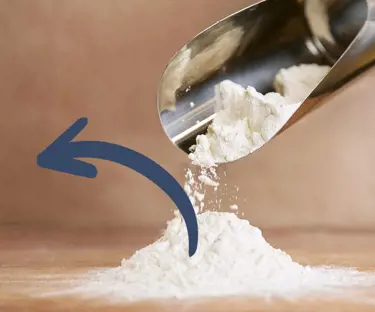Protein-rich beverages are commonly administered to hospitalised patients in order to maintain or rebuild muscle mass and regain physical performance levels. The underlying assumption, one could imagine, is that the results commonly reported from studies of healthy subjects – showing better muscle synthesis – also apply to the acutely ill.
However, relatively little is known about the actual effects of these supplements under catabolic (where muscle tissue is being broken down) rather than anabolic (being built up) conditions.
A difficult task
Acutely ill patients constitute a relatively heterogenous population. They tend to have multiple co-morbidities, take a number of different medications and, from a metabolic standpoint, vary widely from patient to patient. For this reason alone, it’s not feasible to reliably test the effect of protein supplements in small populations of real patients.
To overcome this issue and shed some light on the effectiveness of protein supplements for the acutely ill, we created a more homogenous study model using healthy, young, lean males. This initial study included the injection of E. coli-like toxins into our subjects. These toxins are recognised by the human immune system as actual E. coli, triggering fever-like symptoms for 6-8 hours, mirroring an acutely ill state, but without the heterogeneity of clinical disease.
Test subjects were investigated on three separate occasions: during a period of normal control conditions, and during E. coli exposure with and without amino acid administration. Initially, we hoped to give the test subjects their supplements in beverage form to reflect hospital practice. However, because the subjects felt very ill and were prone to nausea and vomiting, we opted instead for intravenous feeding.
Early indications
So did the subjects react to the increased availability of amino acids and proteins when inflamed by illness? Our results indicated that the body can be manipulated between catabolic and anabolic states using protein supplements even when the patient is acutely ill.
In an attempt to find the most effective protein source during catabolic conditions, we performed a new set of trials, requiring the same profile of subjects to begin with a 36-hour period of fasting. All of the subjects became highly catabolic.
Four-way trial
Upon arrival in the lab after the fasting period, groups were given one of four different beverages: Three were protein beverages (soy, whey, and soy with the addition of a ketone called HMB (β-Hydroxy β-Methylbutyrate)). The fourth was a maltodextrin control beverage containing a similar energy amount to the protein drinks. Subjects were not aware of which beverage they received.
The question we sought to answer was: Is the anabolic effect of whey protein superior to that of the soy beverages in acutely ill subjects? It’s a relevant question because most hospital patients judged to be in need of additional protein are given either soy-based or casein-based beverages.
The subjects visited our lab four times and randomly received all four kinds of beverages. Tracers were then used to identify where amino acids entered or left muscle tissue. Indirect calomitry was applied to understand which nutrients were being utilised, and muscle tissue biopsies were obtained to investigate whether the effects we saw on the tracer data translated into signaling differences within the muscle tissue.
Whey wins the day
As suspected, the study results showed the highest anabolic performance for the whey beverage – although adding HMB to the soy beverage enabled it to perform just as well as the whey compound. Protein synthesis appeared to accelerate, aligning with the tracer data to strengthen the study’s conclusions.
While these results (now published) have provided useful clues, there is still a long way to go until we have a clear enough picture of how muscle synthesis in acutely ill patients can best be supported. And the next set of trials, which is already underway, will address the fact that the catabolic state can be arrived at in different ways (by lying flat, by under-eating or fasting, or when the body is inflamed to a degree that accelerates protein breakdown). Can the results of a study based on fasting be reliably applied to the case of acutely ill patients?
Closer to reality
This next area of investigation, therefore, enables us to drill down still further by combining elements of the first two studies. The latest trial tests a new hydrolysate whey compound against a normal whey protein beverage and a casein product. Subjects fast for a total of 36 hours before coming to the lab where acute inflammation is generated by an E.coli toxin. When symptoms have subsided, a number of different protein beverages are given orally.
Clinically speaking, this is more interesting because, upon admission to hospital, patients are often feverish and very ill. So ingesting nutrients isn’t the first priority for medical staff. Instead, the patient is stabilised, for example, with antibiotics. Protecting the patient against muscle breakdown is often more important during the recovery phase.
The current study will provide more pieces of the muscle-maintenance puzzle for the acutely ill. And with each new trial, we’re getting closer and closer to a reliable reflection of clinical hospital realities.
This blog contains material and information intended for B2B customers, suppliers and distributors, and is not intended as information to the final consumers.


